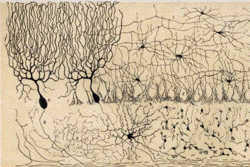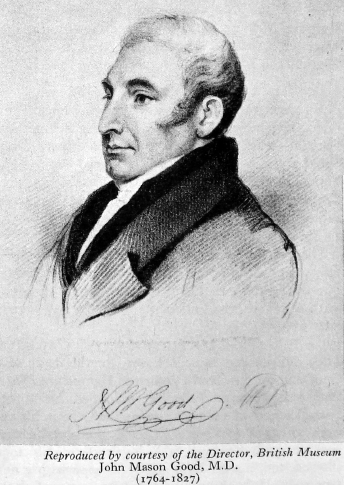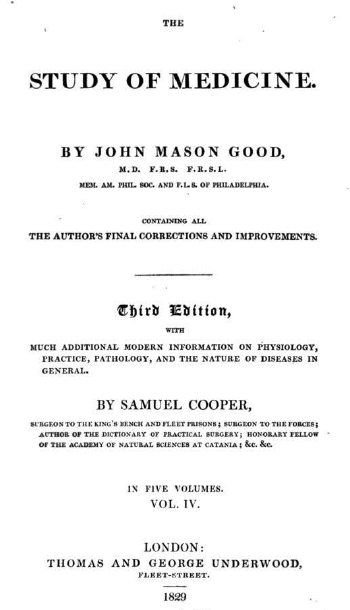
vendredi 1er décembre 2006 la lettre d'information du site baillement.com N°54 Si vous ne voyez pas les images, cliquez ici pour lire cette lettre dans votre navigateur. If you cannot see pictures below, to view the email in your web browser click here baillement.com est libre d'accès, base documentaire pour comprendre, chercher, travailler
-
Le bâillement : - une forme de yoga spontané ?
- Nicole Bourgne
- 2006
- Mémoire
- Yoga : Pandiculation in english
- Une thérapeutique naturelle: le bâillement
- N. Perez-Christiaens
- Yawning by Henrietta Russell
- 1891 and pdf
- Yawning : analytic and therapeutic considerations
- Ned Marcus
- Int J Child Psychotherapy
- 1973;2(4): 406-418
-
The guru within ! - This study was proposed directly for publication on the website.
- Sinews, muscles and other organs - the wondrous biological-computer-machine that we occupy, can be too our "Guru", the "Inner Guru". Of course, it's a metaphor, or a poetic stretch. Our body gives us messages, warnings, and rewards. Our Guru says: "relax, stretch, breathe, open". All this depict our interoception (see: Yawning: unsuspected avenue for a better understanding of arousal and interoception).
- Yoga is a way of life that originated in India, several thousands of years ago, and can offering the opportunity to become aware to sustain a dialogue with 'the Guru".
- Yoga involves, during practice, much more than the asana (postures) and pranayama (breathing exercises) that most people are familiar with (also known as Hatha Yoga), like meditation or relaxation. Hatha Yoga is an ancient, systematic practice for re-creating the "yawn-experience" throughout every part of the body. When the postures of Hatha yoga are explored, yawn and stretch naturally turn up and give evidence for the harmony of mind and body.
- Frequently, an urge to yawn comes up during the yoga or deep breathing. They must not be suppressed. How satisfying a good yawn feels, and how refreshing it can be ! When yawning, the body seems to do yoga involuntarily! Releasing built up physical and emotional tension slowly liberates vast resources of energy.
- A regular yoga practice can gradually and significantly increase a person's sense of self-acceptance and inner peace. This can explain why Yoga is quickly becoming a mainstream tool for stress reduction.
- We become proud to propose a resume of the thesis, sustained by Dr N. Bourgne, for her teaching ability accreditation (yoga) : "Yawning, a spontaneous form of yoga"
-


- Notre gourou intérieur !
- Tendons, muscles et tous nos organes, cette merveilleuse machine biologique grâce à laquelle nous prospérons, peut aussi devenir notre "Gourou", un "Gourou" intérieur et personnel. Bien sûr, il s'agit là d'une métaphore, d'un trait poétique! Notre corps nous délivre des messages, des signaux et des récompenses. Notre Gourou nous dit: "relaxe-toi, détends toi, respire, confie-toi". Tout ceci décrit notre interoception. (voir: Yawning: unsuspected avenue for a better understanding of arousal and interoception).)
- Le yoga est une manière d'accompagner la vie. Ses racines sont indiennes et datent de plusieurs centaines d'années. Le Yoga peut nous offrir la capacité, la technique(?) de dialoguer avec notre "Gourou".
- Le yoga implique, pour sa pratique, bien davantage que l'art des postures (asana) ou d'exercices respiratoires (pranayama) avec lequel la majorité d'entre nous est plus ou moins familier (c'est le yoga connu sous le terme Yoga Hatha). Il implique relaxation et méditation. Le Yoga Hatha est une forme de pratique ancienne capable de recréer l'expérience bâillement-pandiculation. Quand certaines postures sont réalisées, bâillements et pandiculations arrivent spontanément, comme une évidence d'harmonie entre le corps et l'esprit.
- Fréquemment, pendant la séance de yoga et la pratique d'amples mouvements respiratoires, les bâillements arrivent comme une urgence indomptable. Il ne faut bien sûr pas essayer de les empêcher. Qu'il est agréable de sentir les bienfaits d'un bon et ample bâillement; combien c'est régénérant! Quand on bâille, on a l'impression que le corps fait du yoga sans le savoir ni le vouloir. Cette lente libération des tensions internes nous aide à rebâtir tant le physique que le psyché émotionnel.
- La pratique régulière du yoga permet d'acquérir progressivement une forme de paix intérieure, de mieux nous connaître. Ceci permet de comprendre l'engouement actuel pour sa pratique dans laquelle beaucoup de nos contemporains recherchent une réduction de leur "stress".
-
Bâillements et troubles de - l'attention: un cas clinique
- Weinberg's syndrome: a disorder of attention and behavior problems needing further research
- Brumback RA.
- Child Neurol.
- 2000;15(7)478-480
- Variation of behavioral and physiological variables in children attending kindergarten and primary school.
- Koch P.
- Chronobiol Int.
- 1987;4(4):525-535
- Primary disorder of vigilance: a novel explanation of inattentiveness, daydreaming, boredom, restlessness, and sleepiness.
- Weinberg WA, Brumback RA
- J Pediatr.
- 1990;116(5):720-725
- Criteria for primary disorder of vigilance
-
Yawning and the attention deficit hyperactivity disorder (ADHD) - This group of disorders is characterized by a combination of overactive, poorly modulated behaviour with marked inattention and lack of persistent task involvement; and pervasiveness over situations and persistence over time of these behavioural characteristic. Decreasing ability to sustain alertness, wakefulness, arousal, and watchfulness during continuous mental (or other task) performance are some of the major symptomes, as well at the child as the adult.
- One patient proposed spontaneously his case on the site http: // www.yawning.info; then a follow up interview was completed with more precise questioning. Some quotations:
- "I always yawned very hardily with terrible noisy stretches which can be very annoying to the general public. My wife said to me I should put in more of an effort and willingness to seem more civilized around others. It was far too powerful of a force for mere will to overcome and I did not succeed in controlling myself no matter how hard I (or my wife) wanted me to stop. Even driving in my car made me yawn so terribly I felt my jaw would fall off.( ...)
- My family physician of 20 years repeatedly advised me to see a psychiatrist. He wanted to ensure I was not affected by an attention deficit hyperactivity disorder (ADHD). (...) I endured many tests at a University hospital. The psychiatrist informed me I had text book symptoms. My sleep was recorded during three nights (unfortunately I have no reports of it). He advised a treatment of methylphenidate (Ritalin®). Since I have been taking the drug my life has changed. My wife knows when I am under the influence of the medication or nor. (...)
- On the drive to work I yawn and stretch sometimes so strongly that cramps start. As soon as I take the Ritalin the yawns almost all stop. I sometimes make small yawns throughout the day but when I try to yawn harder nothing more appears then a small grimace in the corner of my lips. I am much less sensitive to the yawns of others. Every now and then I will yawn at sight of others but much less often and very small isolated yawns. In the evening when the effects of the Ritalin wear off the large jaw-breaking yawns, stretches and cramps begin again.
- read the testimony. pdf

- Un peu mais trop ... air e air ... (un peu métro RER)
- Bâillements et déficit de l'attention avec ou sans hyparactivité
- Ce type de troubles est caractérisé par une combinaison d'hyperactivité désordonnée non suivie et d'un déficit attentionnel sans capacité à maintenir une activité coordonnée durable et approfondie. Cet état est constant dans le temps, pouvant débuter dès la petite enfance, mais se retrouve également à l'âge adulte. L'incapacité à se concentrer, à rester vigilant et attentif caractérise cette pathologie.
- Un patient a proposé spontanément son cas sur le site http://www.baillement.com, puis ce témoignage été complété par des questions plus précises recueillies secondairement et mises en forme. En voici quelques extraits:
- "J'ai toujours bâillé très fort, avec de terribles étirements bruyants, ce qui est très gênant en public. Ma femme me conseillait de faire attention, d'y mettre un peu plus de bonne volonté pour paraître moins incivil avec mes interlocuteurs. Mais c'était plus fort que moi et je ne parvenais pas à me contrôler malgré toute ma bonne volonté..... Dès que je devais me concentrer intellectuellement, ne serait-ce qu'en discutant, je me mettais à bâiller bruyamment, souvent en m'étirant si fort que les crampes suivaient aussitôt. Je n'en ressentais aucun bien-être, mais une gêne importante. Ces bâillements étaient toujours involontaires et rebelles à ma volonté. Je ne pouvais jamais les empêcher. ...
- Un psychiatre a posé le diagnostic d'un "trouble par déficit de l'attention avec ou sans hyperactivité" ou TDHA. Il m'a conseillé un traitement avec le méthylphénidate (ritaline®). Depuis que je suis sous Ritaline, ma vie est changée et ma femme peut me dire si je suis sous l'effet du médicament ou pas....
- ... Dans l'auto sur le parcours avant d'arriver au travail, il m'arrive de bâiller et de m'étirer à m'en déclencher des crampes. Dès que je prends la Ritaline, c'est fini, je fais parfois encore quelques petits bâillements. ...Je suis passé du statut de grand bâilleur à celui de petit bâilleur. J'ai l'impression de bâiller comme le commun des mortels. Je n'ai plus besoin de m'étirer aussi fort et aussi bruyamment, malgré moi. La vie a changé en bien mieux. Je suis, depuis lors, beaucoup moins sensible aux bâillements des autres. Je le suis encore, mais pas comme avant : moins souvent et surtout je ne fais que de petits bâillements isolés." lire ce témoignage. pdf
-

- Brain plasticity and mental processes:
- Cajal again
- Javier DeFelip
- Nature Reviews Neuroscience
- 2006;7,(10) 811-817
-
-
The year 2006 marks the 100th anniversary of the first Nobel Prize for Physiology or Medicine for studies in the field of the Neurosciences jointly awarded to Camillo Golgi and Santiago Ramón y Cajal for their key contributions to the study of the nervous system. This award represented the beginning of the modern era of neuroscience. - Cajal produced the first detailed descriptions of the morphology and of the intrinsic connections in most regions of the CNS, who discovered and named the axonal growth cone ('cono de crecimiento') and who devised the hypothesis of chemotaxis or chemotactism, later to be called neuro tropism.
- The Neuron Doctrine represents the fundamental organizational and functional principle of the nervous system, in which it is stated that the neuron is the anatomical, physiological, genetic and metabolic unit of the nervous system. The observations Cajal made with the Golgi method were so decisive that they represented the main core of the review published in 1891 by Wilhelm von Waldeyer-Hartz (1836-1921), where the term 'neuron' was introduced to denote the nerve cells.

1906 marque le centenaire du premier prix Nobel de physiologie et médecine attribué à Camillo Golgi and Santiago Ramón y Cajal pour leur contribution décisive à compréhension de l'architecture cellulaire du système nerveux. Il est légitime de les considérer comme les fondateurs des neurosciences.
-
Le bâillement en langage des signes - cliquez pour démarrer
-
Pandiculation - Transient elongation of the extensor muscles usually with deep inspiration and a sense of lassitude.
- John-Mason Good
- 1829
-

- "Pandiculation, considered physiologically, is an instinctive exertion to recover a balance of power between the extensor and flexor muscles, in cases in which the former have been encroached upon and held in subjection by the latter.
- ....
- In all these cases, pandiculation is a naturel action; it is an effect produced by the will when it is called to the particular state of these two state of muscles, or by the instinctive or remedial power of nature, which supplies its place, when it is dormant or inattentive, to restore case to a disquieted organ. But, in an infirm or debilitated condition of the system, it evinces a morbid and couvulsive character, and takes place without our being able to prevent it, even when the will uses its utmost effort to resist, instead of to encourage it."

-
Autres documents mis en ligne ce mois-ci :
- Les oeuvres morales et meslees de Plutarque 1618
- Le sommeil tiers de notre vie. M Manaseina 1896
- Traité d'anthropologie physiologique et philosophique F Frédault 1863
- Annales des sciences naturelles Auduoin 1831
- Evaluation of Eustachian tube function by sonotubometry: results and reliability of 8 kHz signals in normal subjects Di Martino EF, et al.
- The relationship between the 'superior constrictor swallow', clicking of the ears and ear disease Gray LP
- A method of graphic registration of the act of yawning and others form of mouth movements Bordiushkov I
- La bâilleuse de L. Loiseau 1998
- Caffeine withdrawal: a parametric analysis of caffeine dosing conditions Evans SM, Griffiths RR
- Gähnkrämpf bei Tabes Somer W 1922
- Self-monitoring and mimicry of positive and negative social behaviors Estow S, Jamieson JP, Yates JR.
- La peste. Etude sur les maladies éteintes et les nouvelles maladies Anglada Ch. 1869
- Anfallsweises Gähnen Kuhn F 1952
- Yawning The Lancet 1952
- Yawning the Lancet 1905
Résultats du sondageau 30 novembre 2006 Recherche par mot du site
-
Nombre de questionnaires remplis : 2317 - Combien de fois bâillez-vous par jour ? <5 = 24,7%.. 5-10 = 25,4%.. 10-15 = 15.3%.. 15-20 = 9,3%.. >20 = 25,2%
- Ressentez-vous des baillements excessifs ?
- 64,8% = non, tant mieux
- 28,9% = oui et je ne sais pas pouquoi
- 7,8% = oui et je prends des antidépresseurs
- 1% = oui et je prends des anti-épileptiques
- 4,9% = oui et je prends d'autres médicaments
- 2,7% = oui et j 'ai des troubles neurologiques
- 2,3% = oui et j 'ai des troubles hormonaux
- 2,2% = oui et j 'ai des tics moteurs
- 1,8% = oui et j 'ai des tocs
- déclenchez-vous facilement le bâillement d'autrui ? 75,3%
- êtes-vous sensible au bâillement d'autrui ? 72,9%
- "Un savant est quelqu'un qui sait des choses qu'il faudrait savoir mieux que lui, pour être sûr que ce n'est pas un imbécile."
- "A scientist is somebody who knows things which it would be necessary to know better than him, to be sure that it is not an imbecile."
- Jean Paulhan (1884-1968)
baillement.com baillement.info yawning.info écrits et réalisés par le Dr Walusinski
lire les lettres précédentes d'information du site
tapez votre email - give your email pour ne plus recevoir cette lettre - to unsubscribe to the website's letter:

